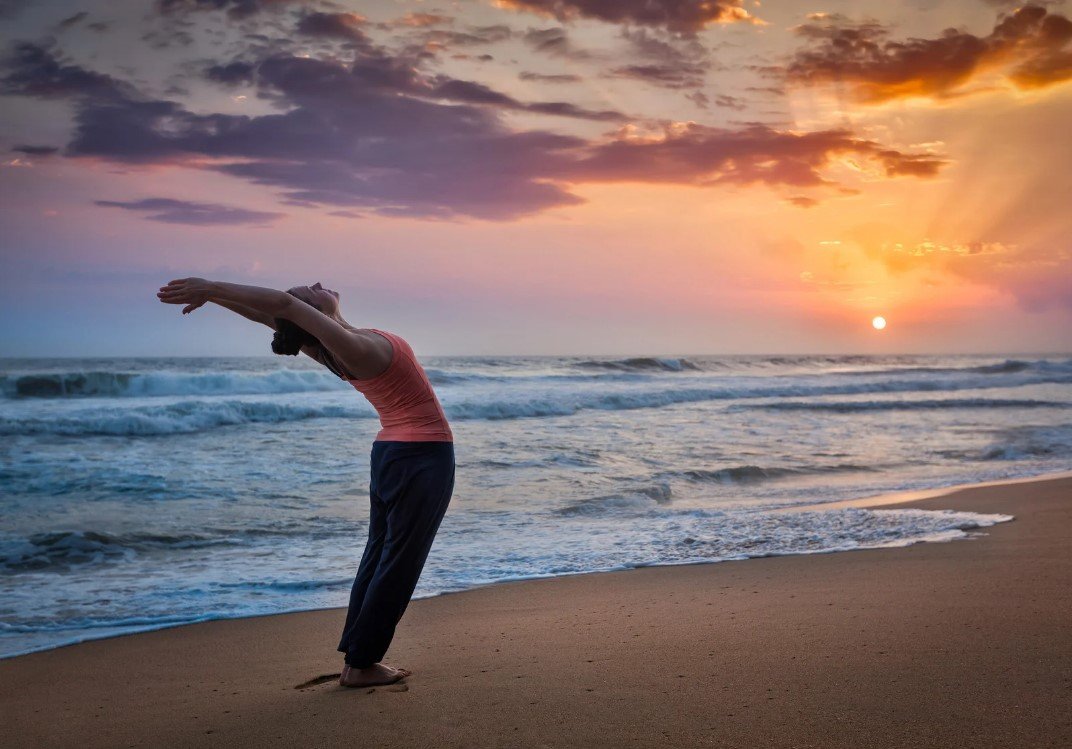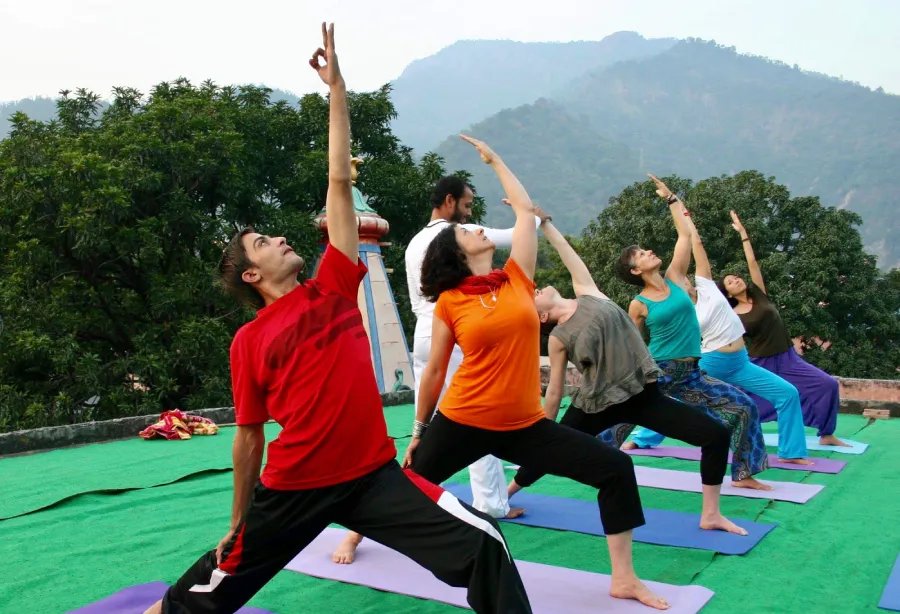Before proceeding with the steps, it is important to understand what any holistic practice encompasses. The same applies to Surya Namaskar. Most people whom you will come across think about Sun Salutation as an exercise. It is, of course, a great cardiovascular activity, but it is equally beneficial for the mind and soul. This powerful practice, which comprises 12 steps, is best done early in the morning. Each round has two sets and the total is twelve. You can learn about this yogic practice in complete detail at the yoga school in Rishikesh.
A traditional Hatha Yoga practice creates the pathway for something better. The practice draws inspiration from the cyclical nature of things, which can lead to steadfastness and growth. But for now, let us catch a few glimpses.
How To Do Surya Namaskar (Sun Salutation)?
The best yoga school in Rishikesh will advise practitioners to do nine rounds of Surya Namaskar, which is considered the most effective. There are many variations for people, who have health limitations.
1. Prayer Pose Or Pranamasana

You have to keep your feet a few inches apart from each other and bring the palms near the heart, in the prayer position. You have to lift the arms while inhaling and exhale when putting both palms together.
2. Hastauttanasana (Raised arms pose)
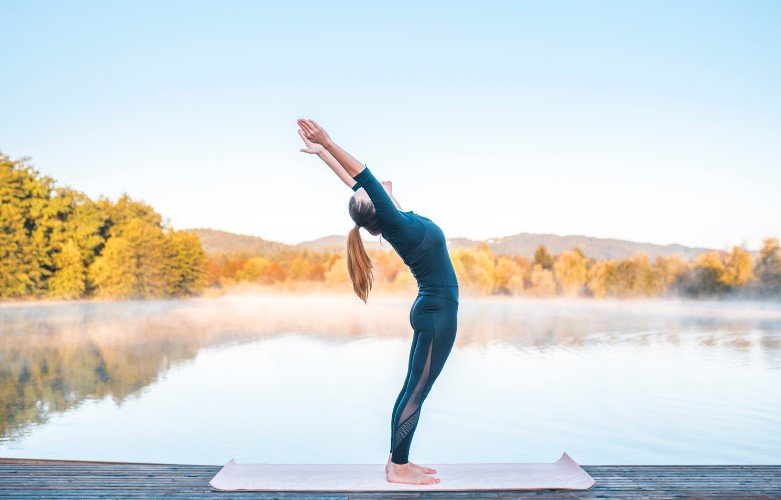
Slowly, extend both hands upwards, while moving the torso, arms, and head slightly backward. Inhale while doing this movement, and aim to stretch the entire body from the heels to the tips of the fingers.
3. Pada Hastasana (hand to foot pose.)
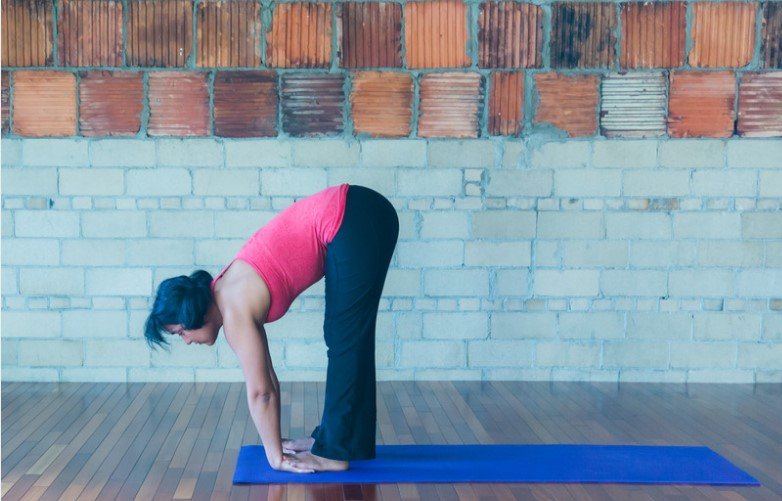
While exhaling, bend the body forward from the hip, while keeping the spine straight. The hands rest on both sides of the feet, in complete exhalation. Try to keep the forehead close to the knees, as much as possible.
4. Ashwa Sanchalanasana (Equestrian Pose)
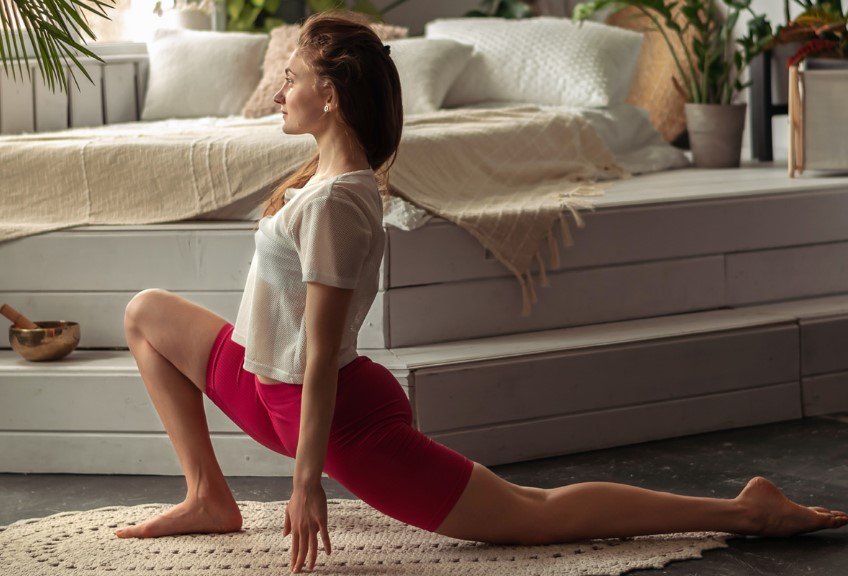
While inhaling, push the right leg backward and stretch it out. You have to keep the left leg folded, with the knees perpendicular to the floor, and the foot between both hands supporting the body in this pose. Lift the head and look forward.
5. Dandasana (Staff Pose)
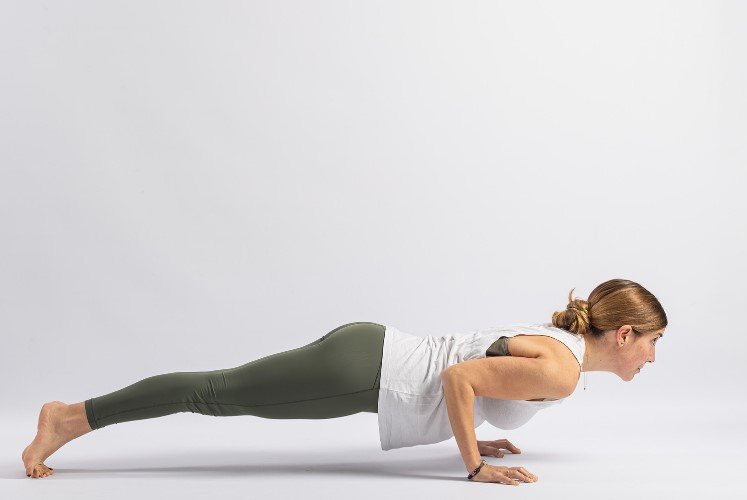
Thereafter, you have to take the left leg backward, ensuring that your body weight is equally distributed on both palms and the toes. The entire body should be in one straight line, with the gaze directed forward.
6. Ashtanga Namaskara (Eight Limbed Pose)
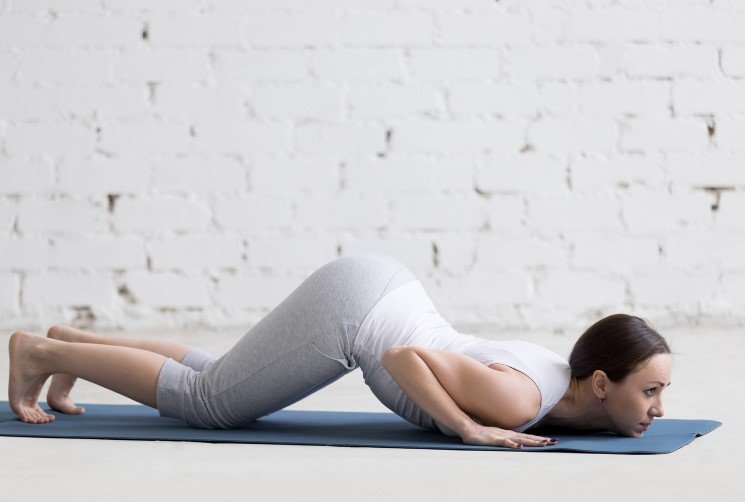
Slowly, bend the elbows and bring the knees, chest, and chin on the floor. Your posterior will be raised slightly. At one point in time, the two hands, two feet, the knees, the chest, and the chin are in contact with the ground.
7. Bhujangasana (Cobra Pose)
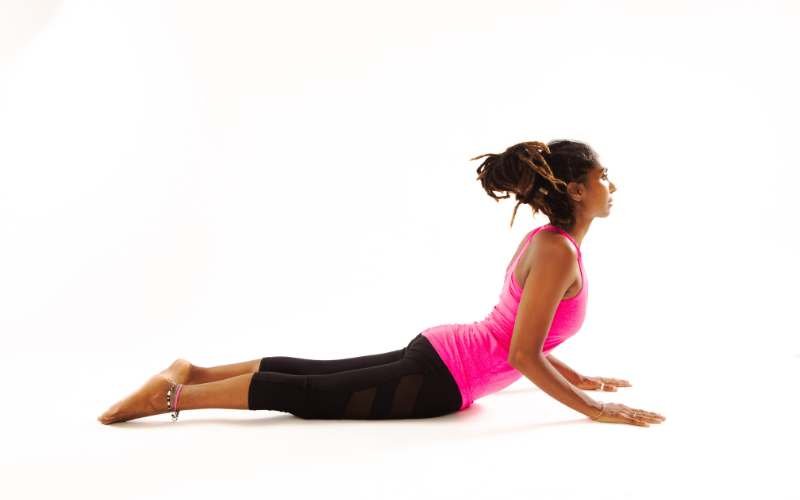
In this pose, the body looks like a cobra, hence the name. Slowly, slide downward and forward, from the previous pose and assume the cobra stance. The shoulders must be away from the ears, and the elbows bent. Look ahead. As you inhale, aim to push the chest forward and as you exhale, bring the belly button down.
8. Adho Mukha Svanasana (Downward Facing Dog)
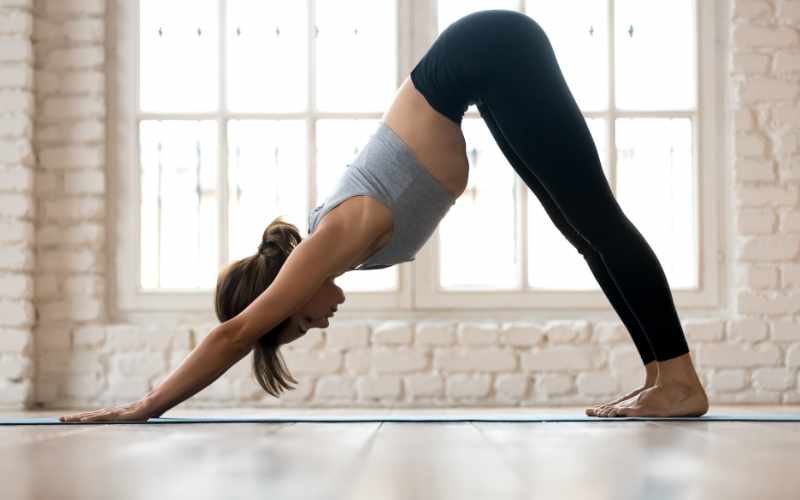
Exhale and lift the hips, and bring the body into an inverted V-shape. Try to keep the heels on the ground, to deepen the stretch. You must try to point the tailbone, towards the ceiling.
9. Ashwa Sanchalanasana (Equestrian Pose)

While inhaling, push the right leg forward and bend it at the knees. You have to keep the right foot between both hands supporting the body in this pose. The left leg stretches backward in this case. Lift the head and look forward.
10. Pada Hastasana (hand-to-foot-pose)

While exhaling, bring the left leg forward beside the right one. And while keeping the spine straight, rest both hands on both sides of the feet, on complete exhalation. Try to keep the forehead close to the knees, as before.
11. Hastauttanasana (Raised arms pose)

Slowly, extend both hands upwards, while moving the torso, arms and head slightly backward while inhaling. The pelvis can jut forward a bit. Give a good stretch to the entire body from the heels to the tips of the fingers.
12. Pranamasana (Prayer Pose)

Again, put both hands in front of the heart, in the Prayer position.
Lastly assume the Tadasana position, with the hands by your side, thus ending one round of sun salutation.
This is an extremely beneficial asana that helps in maintaining cardiovascular health, stimulates the nervous system, and stretches the entire body. Your immune system will also get strengthened. If you want to try out some of the other variations, a yoga school in Rishikesh can guide you.
Check out the benefits of sun salutation
Conclusion
You must ensure to practice each pose with minimal effort. Moreover, proper breathing is also necessary. You can also manage your weight with a few rounds of Surya Namaskar, each day. Practicing this on an empty stomach yields huge results. So, go for it today and reap the benefits. You will surely become energized and get a cure for many chronic health problems.
For More info about Surya Namaskar you can join 200 hour yoga teacher training in India and 300 hour yoga teacher training in India
